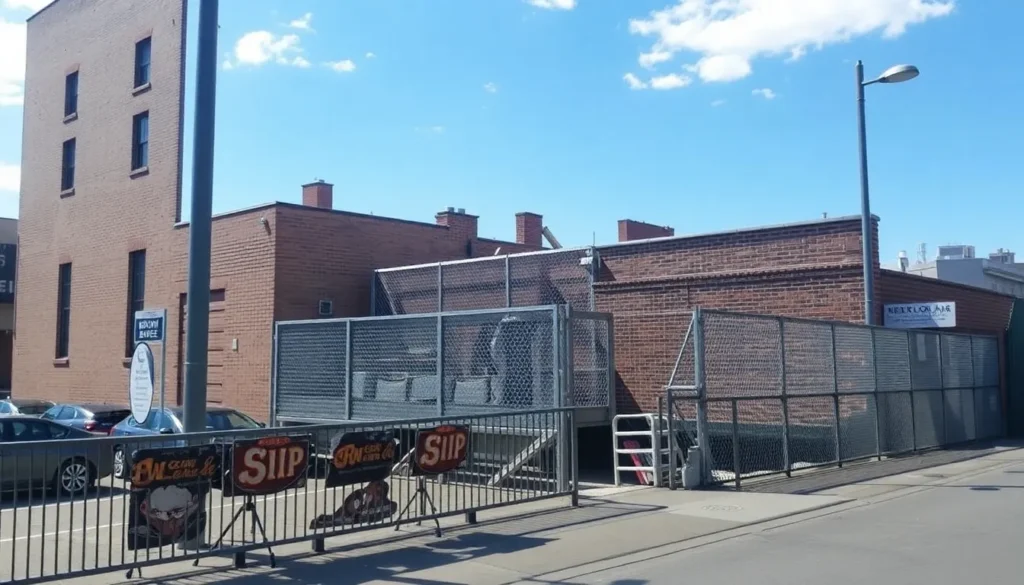Visit Williamsburg, the Orthodox Jewish Neighborhood in New York

Before we ventured into the vibrant streets of New York City, we had no idea that tucked away in Brooklyn lies a neighborhood that hosts one of the largest communities of Orthodox Jews in the world. Welcome to Williamsburg, a place that juxtaposes the traditional with the modern. While South Williamsburg embraces a more alternative and hipster vibe, the Orthodox community thrives in the northern part of this neighborhood. In this article, we’ll guide you through how to explore Williamsburg, shedding light on its rich culture and the captivating stories that unfold within this unique corner of the Big Apple.
Navigating through New York is always a delightful surprise. One moment you might find yourself surrounded by Italian bakeries, and the next, you're amidst bustling Chinese shops or the historical richness of Harlem. However, Williamsburg offers a distinct experience that stands out even in this eclectic city. If you’re planning to delve deeper into the heart of this Orthodox Jewish community, stay with us as we explore how to visit the Orthodox Jewish neighborhood in New York and share fascinating insights about its culture.
How to reach the Orthodox Jewish neighborhood in New York
The nearest subway stations to the Orthodox Jewish enclave are Hewes St (lines J and M) and Broadway (line G). If you prefer public transport, Google Maps can guide you through bus routes easily. Once you arrive, make your way to Lee Avenue, the main artery of the neighborhood, where the pulse of community life can be felt the strongest.
While we explored the area on our own, guided tours are an excellent option if you seek a more structured experience. One of the best-rated options is the contrast tour, which provides insights into the diverse cultural tapestry of New York.
Understanding who the Orthodox Jews are
Judaism today exists in various branches, primarily categorized as conservative, reformist, and Orthodox. Orthodox Jews, in particular, adhere strictly to the Halakha, the traditional Jewish law derived from the Torah. Within this group, different sects exist, and the Williamsburg community is part of the Satmar Hasidic branch, which has its roots in Hungary. This group migrated to the United States fleeing the horrors of World War II, led by Rabbi Teitelbaum.
Here are the 13 principles of Jewish faith that guide their beliefs and practices:
- The existence of God
- The unity and incorporeality of God
- The eternity of God
- The importance of prayer
- The belief in prophecy
- The significance of the Torah
- The belief in divine reward and punishment
- The coming of the Messiah
- The resurrection of the dead
- The importance of community
- The significance of observance
- The importance of mitzvot (commandments)
- The existence of an afterlife
While the aesthetics of the neighborhood may not be conventionally charming—often appearing austere and somewhat unkempt—the essence of its community offers a rich cultural experience. Many of the wealthier Jews reside in other areas of the city, often engaged in commerce, particularly in jewelry and electronics, like the well-known BH store. The majority you’ll encounter here lead more humble lives.
As you stroll through the streets, you will immerse yourself in a new world. You’ll see men dressed in black coats, adorned with hats, side curls, and long beards; women in modest clothing, often wearing wigs, and children playing joyfully, especially on Saturdays.
The invisible thread
Upon entering Lee Avenue, you may notice an invisible thread encircling different parts of the neighborhood. This thread, known as the Eruv, plays a crucial role during Shabbat. Orthodox Jews are prohibited from performing many activities during this sacred time, including cooking, lighting fires, and transporting items. The Eruv creates a symbolic boundary, allowing certain activities within its confines, provided they are necessary. Interestingly, Manhattan boasts around 30 kilometers of Eruv! Learn more about the invisible thread.
The hats
You won’t find an Orthodox Jew without a hat, and there are several types to recognize. The kippah, a traditional Jewish skullcap, symbolizes their reverence for God. Another common sight is the wide-brimmed black hat, which denotes distinction and is interestingly produced in Seville. The most extravagant is the shtreimel, a fur and velvet hat worn only during Shabbat and Jewish festivals, often costing between $600 and $5,000.
The Peiot
The peiyot are the long side curls that men grow in accordance with one of the 613 mitzvot (divine commandments). Although trimming is permitted, many in this community choose to leave them uncut.
Women in the community
The women also draw attention with their modest attire—dark colors, ankle-length skirts, and flat shoes, with no flashy accessories. Notably, they cover their hair after marriage, using scarves (tichel) or wigs, as hair is considered a symbol of sensuality. In the Satmar tradition, women often shave their heads upon marriage.
Indifference, or is it curiosity?
While walking through the neighborhood, you may notice that many inhabitants appear indifferent to outsiders. Men tend to avoid eye contact, particularly with women. However, women often glance at passersby, perhaps out of curiosity, and children are usually inquisitive, peering at you with wonder.
The work dynamics
Many women in the community contribute financially, often working as teachers or in shops. Meanwhile, men primarily engage in spiritual pursuits, studying the Talmud and Torah. Those who do work often find employment in various businesses.
The children
Expect to see numerous children in Williamsburg, with many families having twins or more. This stems from young marriages and a cultural emphasis on large families. If you spot a woman on the street, it’s likely she’s pushing a stroller or is visibly pregnant.
The school buses and toy stores
Pay attention to the school buses; they feature Hebrew writing. In fact, this is the language you’ll often hear spoken on the streets! Toy stores have a nostalgic charm, reminiscent of a bygone era, filled with unique finds.
Exploring more about the culture of Orthodox Jews
As we delved into this article, we uncovered intriguing aspects of Orthodox Jewish culture that are worth sharing:
Kosher food explained
You might have heard the term Kosher but what does it really mean? In Jewish belief, only God has the authority to take a life, which is why a specific ritual called shejitá is performed to sanctify the animal before slaughter. Only meat that adheres strictly to these guidelines is considered pure, or kosher.
A quick tip: never offer blood sausage to a Jew, as blood symbolizes life. Additionally, when consuming meat, they cannot drink milk or eat dairy products for at least three hours afterward. It’s a complex yet fascinating dietary world!
Beliefs in reincarnation
Orthodox Jews hold a belief in reincarnation, which prohibits cremation. Mourning rituals are also strictly observed; for instance, immediate family members generally refrain from leaving the house for a month after a death.
Marriage traditions
Marriages are often arranged between families and the rabbi, with the idea that love will develop over time.
Purification after menstruation
After a woman’s menstrual cycle, she must undergo a ritual bath (mikvah) for purification before resuming relations with her husband, and contraception is typically avoided.
Fridays are hectic
Fridays can be quite stressful as preparations for Shabbat begin—ensuring everything is ready for a day of rest filled with prayers, family, and celebration. Notably, only men with their sons attend synagogue during this time. Learn more about Shabbat.
A fairly closed community
As you may have gathered, the Orthodox community tends to be quite insular. They often do not interact with outsiders, which is quite unique in a city renowned for its diversity. With their own schools, banks, and shops, many could easily spend their entire lives within the neighborhood without needing to venture out.
Tips for visiting the Orthodox Jewish neighborhood in New York
While there’s no need to feel apprehensive, being aware of a few cultural insights can enhance your visit. Here are some key tips:
- Be respectful. When taking photos, be discreet; it’s important to remember that no one appreciates feeling like a spectacle in their own home.
- Consider visiting the neighborhood on a Saturday morning. This is Shabbat, a sacred day of rest and worship, where you’ll witness the community dressed elegantly as they make their way to synagogue. However, note that shops will be closed, so plan accordingly.
- In April 2019, there was a measles outbreak linked to this neighborhood, primarily fueled by anti-vaccine sentiments among some community leaders. It’s a reminder of the importance of public health.
- Whether to explore independently or join a tour depends on your preference. While both options can be fulfilling, first-time visitors might find a guided contrast tour beneficial for insights into New York’s diverse areas.
Visiting the Jewish neighborhood of Williamsburg is undoubtedly one of the enriching experiences you can engage in while in New York. It promises a glimpse into a culture vastly different from our own. Have you ever visited the Orthodox Jewish neighborhood in New York?
| Save on your trip |
| Find cheap flights to New York here |
| Discover accommodation at the best prices here |
| Book activities in Spanish in New York here |
| Get a 5% discount on your travel insurance with IATI here |
| Book airport transfers here |
| Learn how to withdraw money without fees here |
| Get a 5% discount on your eSIM from Holafly here |
| Check out the best books and travel guides here |
| Explore all our articles on New York |






Deja una respuesta